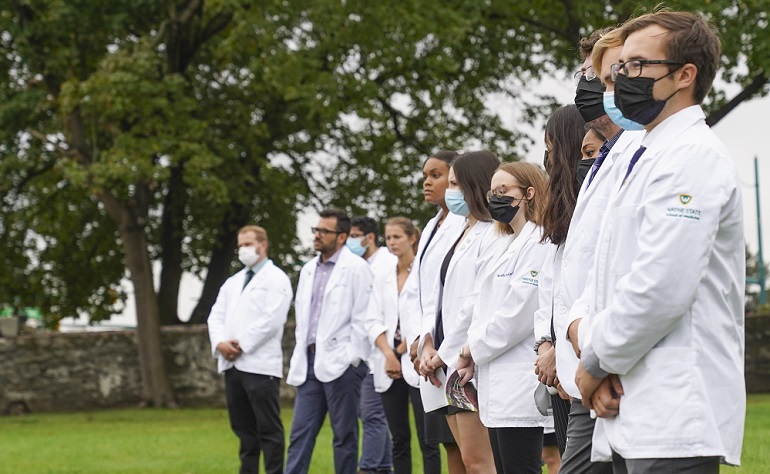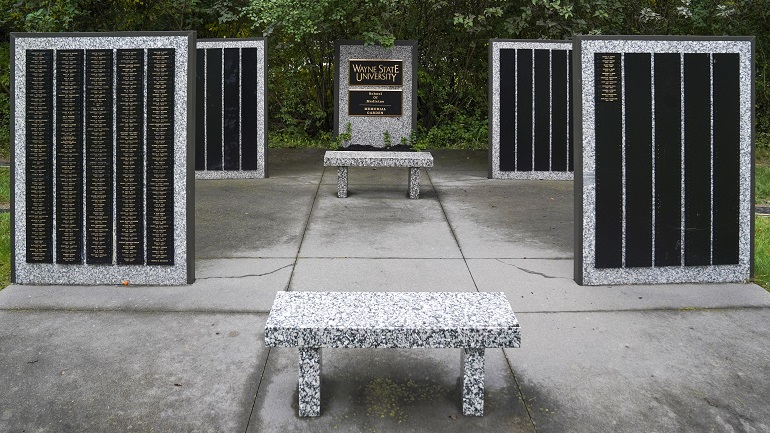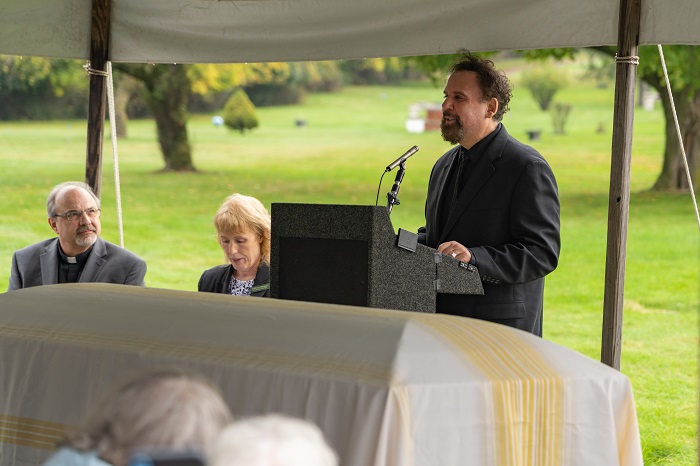
Wayne State University School of Medicine students and faculty joined families of those who donated their bodies for medical education in tribute and gratitude at this year’s Body Bequest Memorial Program, held Oct. 8 at Oakland Hills Memorial Gardens in Novi.
The memorial recognized 243 people who completed their role as a “first patient” for WSU medical students as part of the Medical Gross Anatomy course, which offers a full cadaver dissection experience to first-year medical students.
These individuals continued to make significant contributions after their death to the students who were able to learn anatomy via a human cadaver versus a model most medical schools use today.
As part of the ceremony, each attendee received a rose and program from a medical student, who also took turns reading the names of the deceased.

Student speakers included second-year medical students Dana LaBuda, John Rexroth and Anthony Talaugon.
“I never cease to be amazed by a person's decision to donate their body. I believe this gesture is loaded with reasons of why humanity is beautiful, so I wanted to honor that with my speech. It is indispensable. And not just because it aids in learning about the body. It is a part of a larger ritual that welcomes students into the career of medicine and establishes them in a long lineage of physicians who had to undertake something similar,” Talaugon said. “Even when the physical body falls apart, the human spirit has the final say and it continues to live on. For the medical student, these individuals live on through the knowledge they gave us.”
Rexroth wished to speak because he wanted to express his gratitude for the families of the people he and his classmates learned from.
“It is an experience that I will never forget. These individuals gave us a great gift in donating their bodies so that we can further our medical education. It taught my peers and me a level of respect and responsibility in caring for our patients that we will take with us throughout our careers. They are our true ‘first patient,’” he said.
Vice Dean for Medical Education Richard Baker, M.D.; Professor of Ophthalmology, Visual and Anatomical Sciences Paul Walker, Ph.D., who directs the Medical Gross Anatomy course; and School of Medicine Dean and Vice President of Health Affairs Mark Schweitzer, M.D., also spoke at the event.

“Your loved ones were, are and became something. They helped to train the next generation of health professionals. Their sacrifice, and your sacrifice, affects patients they’ve never met and patients of patients who they’ve never met. And there’s no greater gift one can give mankind than to help someone, and for them never to know that you helped them,” Dean Schweitzer said.
As one of only a few medical schools continuing to use cadavers in teaching, Wayne State physicians-in-training and graduates count the experience, and the learning communities they share their gross anatomy experience with, as one of the most important experiences in medical school.
“First-year cadaver lab was one thing that drew me to Wayne State University School of Medicine. Learning from a cadaver provides another level of education compared to books or pictures,” Rexroth said. “It also allows you to be hands-on and grow bonds with your classmates in the first few months of knowing them. Being able to walk around and look at other groups’ bodies gives you an appreciation of the variability and fragility of the human body, and cannot be supplemented with pictures or a textbook.”